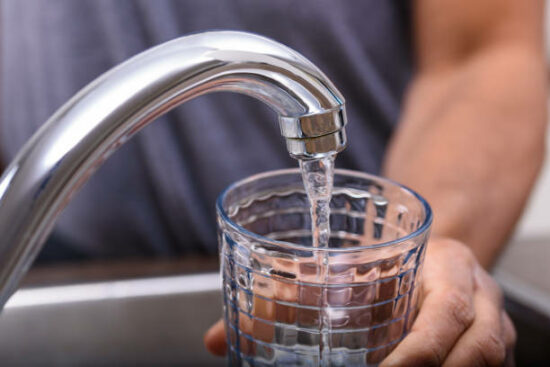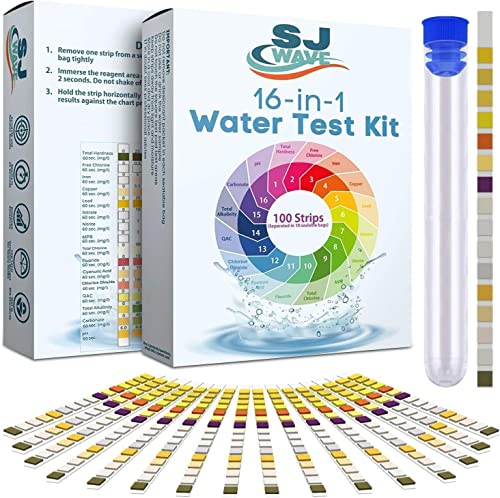Are you wondering if Brita filters can make tap water safe to drink? Do you want to know if they can remove chlorine and other contaminants from your drinking water?
If so, this blog post is for you! We’ll be looking at the effectiveness of Brita filtration systems and helping you decide whether it’s worth investing in one.

Does Brita Filter Remove Chlorine?
Chlorine is a naturally occurring element that is found in water supplies. It helps to kill bacteria and other microorganisms, but it can also leave a bad taste and odor in your drinking water.
Fortunately, Brita filters are designed to remove chlorine taste and odor from tap water.
The Standard and Brita Elite filters are certified to reduce aesthetic chlorine under NSF/ANSI 42, meaning that they reduce the level of chlorine to 99%.
Brita’s Activated Carbon filters are made from coconut-based activated carbon, which removes chlorine, zinc, copper, cadmium, and mercury from your tap water.
However, it’s important to note that Brita filters do not remove significant amounts of fluoride from tap water nor all nitrates, dissolved minerals, or bacteria and viruses.
Therefore, it is best to consult with a healthcare professional before drinking tap water if you have any specific health concerns.
Overall, Brita filters are a great way to reduce the amount of chlorine in your drinking water and make it taste better.
- Brita Bottle filters: Yes
- Brita Stream filters: Yes
- Brita Faucet filters: Yes
- Brita Standard filters: Yes
- Brita Elite filters: Yes
- Brita Longlast+ filters: Yes
What is Chlorine?
Chlorine is a chemical element found in nature and is one of the most commonly used disinfectants in water.
Chlorine helps keep drinking water safe from bacteria and other contaminants, but too much chlorine can cause taste and odor issues.
How Does Brita Filter Work?
Brita filter pitchers and faucet filters use a coconut-based activated carbon filter to remove chlorine, zinc, copper, cadmium, and mercury from tap water. Activated carbon filters trap unwanted contaminants in the filter and absorb them, meaning that the contaminants are not removed from the water.
While these filters effectively remove chlorine, they don’t remove nitrates, dissolved minerals, bacteria, or viruses. It is important to note that Brita’s new and improved Longlast+ Filter removes 99% of lead and reduces the presence of chloramines, another type of chlorine, making it a great choice for those seeking additional protection.
How To Know if Your Brita Filter is Working?
Knowing whether your Brita filter is working properly is important for ensuring that it is effectively removing chlorine from your water. Generally, Brita filters are designed to have a “lifespan” of approximately 40 gallons or two months—whichever comes first.
The best way to determine if your filter is still working properly is to look for signs of wear and tear, such as discoloration or an unpleasant odor. You can also test the chlorine levels in your water before and after using your Brita filter to ensure it is doing its job.
When to Replace Your Brita Filter?
Knowing when to replace your Brita filter is important, as its effectiveness decreases over time. If you are using a Brita filter to remove chlorine from your water, it is recommended that you replace the filter every 40 gallons or approximately every two months.
Signs that your Brita filter needs to be replaced include a decrease in water pressure or a decrease in taste. Additionally, it is time for a new filter if your water still has a chlorine-like smell or taste. Replacing your filter when necessary will ensure that your water is safe and free of chlorine.
Alternatives to Brita Filters for Chlorine Removal
If you’re looking for an alternative to Brita filters for chlorine removal, reverse osmosis (RO) systems are an excellent choice. RO systems use multiple stages of filtration to remove chlorine, chloramines, and other unwanted impurities from your water supply.
The first filtration stage uses a sediment filter to remove large particles, while the second stage uses an activated carbon filter to remove chlorine and other volatile organic compounds. The third stage is a membrane filter reducing chlorine, nitrates, and other dissolved minerals. Finally, the fourth stage uses a post-filter to provide the cleanest and purest drinking water.
RO systems are more effective than Brita filters at removing chlorine and other impurities, but they’re also more expensive and require more maintenance.
Testing for Chlorine Levels in Water
Testing for chlorine levels in water is a great way to ensure that your Brita filter is working properly. Testing can be done in several ways, including using a test strip, a colorimeter, or a chlorine test kit.
Test strips are easy to use and provide an approximate reading of chlorine levels but are not as accurate as the other two methods. Colorimeters measure the color of a water sample and then use a computer to calculate the amount of chlorine present.
The most accurate way to test for chlorine levels is to use a chlorine test kit, which uses a chemical reaction to measure chlorine levels. It is important to note that these test kits should only be used by qualified personnel, as incorrect readings can be dangerous.

Jay
Jay is a health and wellness enthusiast with expertise in water quality and nutrition. As a knowledgeable advocate for holistic well-being, Jay successfully manages Type 2 Diabetes through informed lifestyle choices. Committed to sharing reliable and authoritative insights, Jay combines firsthand experience with a passion for enhancing health."




